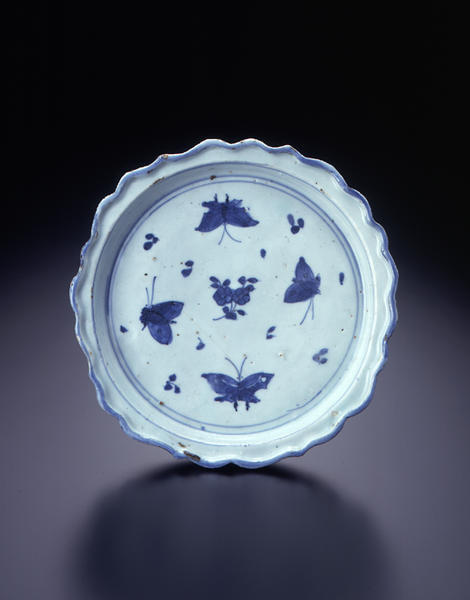Sallow Dish with Flower and Butterfly Design
- Jingdezhen kiln, China
- China, late Ming to early Qing period
- 17th century
- Jingdezhen ware, Ko-sometsuke type
- H-3.3 D-23
Catalogue Entry
The ceramics known in Japan as "ko‐sometsuke" are actually Chinese porcelains with underglaze blue decoration created at the non‐imperial kilns at Jingdezhen during China's late Ming and early Qing dynasties. Originally these wares were used as everyday dishes by the common classes, and hence there are almost no extant examples of these wares found in China or the west today. It is also clear that a large percentage of the production of these kilns was made on order for export to Japan, and thus the majority of extant examples were handed down in Japanese collections. The beauty of ko‐sometsuke lies in its soft glaze and the interesting patterns created in underglaze blue decoration. These designs include images of animals, birds, butterflies, fish and shellfish, plants and other stylized forms, and often we can discern the tastes and preferences of the tea ceremony master who ordered the specific work to be created. Ko‐sometsuke works often have a creeping glaze tendency due to the difference in shrinkage rates of the body clay and glaze. Of course, the fewer of these creeping glaze edges, the more accomplished the work. Similarly the higher grade of these wares is distinguished by a particularly vivid bloom of the underglaze blue.
It is thought that this bowl would have been originally one of a set, but today this one bowl is all that remains. The central flower is surrounded by four flying butterflies, and their quiet elegance makes this a particularly lovely, spring‐like bowl. The edge is sharp, pointed edges, while the bottom has been left unglazed with a open‐holed foot style.
